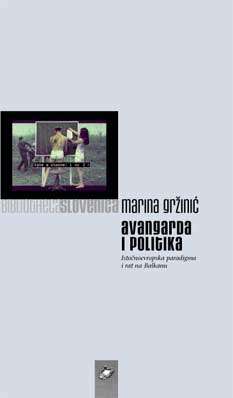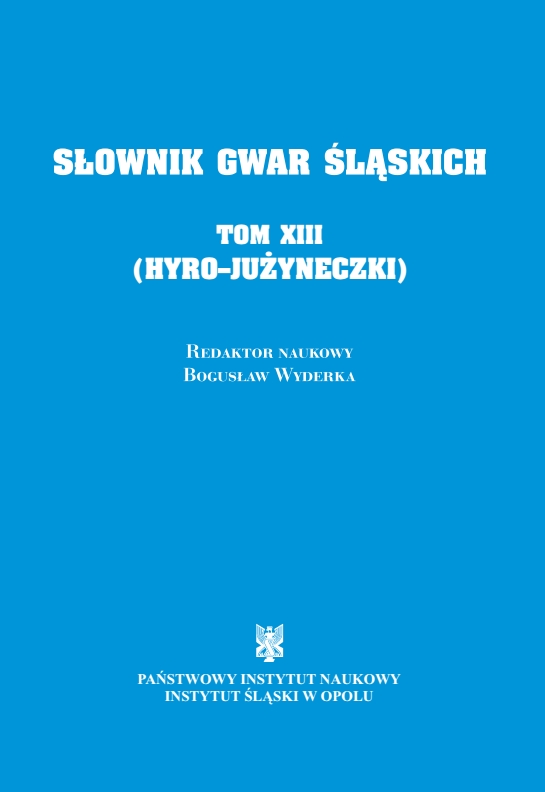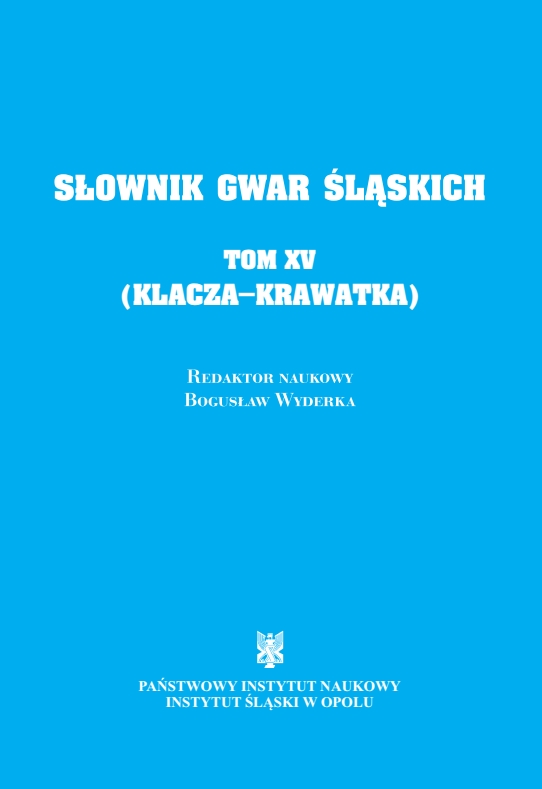
Avangarda i politika
One always searches for some symbolic point from which one can claim that something ended and something else began, even though there are no beginnings and no endings.
More...We kindly inform you that, as long as the subject affiliation of our 300.000+ articles is in progress, you might get unsufficient or no results on your third level or second level search. In this case, please broaden your search criteria.

One always searches for some symbolic point from which one can claim that something ended and something else began, even though there are no beginnings and no endings.
More...
The academic forum “Literature of the Recent Past (1944-1989)”, organized by the Faculty of Philology at the South West University, combined the efforts of literary theorists of several generations to reflect on that part of Bulgaria’s recent past which has already turned into history. However, this history has not been completed yet in a comprehensive and objective manner. The aim of the forum was to create the proper discourse in which the history of literary theory writing will be attributed a multifaceted pluralistic ring. The project was a part of the attempt to reveal the Bulgarian literary history not only from the point of view “the history of generals”, but from the perspective of cultural identity manifestations on a national scale.
More...
It is by now a tradition that the intellectual efforts of the participants at the Early Fall School in Semiotics (EFSS), organized annually by the Southeast Center for Semiotic Studies (SEECSS) at the New Bulgarian University, result in a collection of selected papers. The present volume in English and French is an outcome of the XIIth edition of the EFSS on "Semiotics, Image and Narration", held in 2006 in the town of Sozopol. It is formally divided into two parts, containing texts by 'guest lecturers' from our partner Universities in Finland, Italy and USA, as well as by 'local participants' - professors and students at the New Bulgarian University. From parchments to paper and from print to the internet, "the story of humankind has been written, and will be written upon its virtual walls" (Albertson, 1997). In the new millennium we are ever more surrounded by bulletin boards and computer networks, from advertisement banners to cyberspace. Nowadays humankind learns by watching rather than by reading or being lectured to. In order to be considered literate in the information age, the new literate person needs to be media literate as well as being proficient in literature and arithmetic.
More...
In 2016 we have celebrated two significant events: a Silver jubilee to mark the 25th year of the establishment of the Faculty of Philological Studies and the 40th anniversary of the foundation of the South West University in Blagoevgrad. Both events are loaded not only with the symbols of the anniversaries but also with the hard work, perseverance, commitment and emotions of a few generations of scholars and researchers, who devoted their time and work to the elevation of the philological and university knowledge in South-west Bulgaria to the highest ranks in the country. The Collection of articles, offered to the readers’ attention, has been named after the National conference with international participation: “The World is the Word and the Word is the World” since our admiration for the words is in the base of our love to philological knowledge. It comprises most of the conference papers, presented in the event, organised as part of the celebrations of the two anniversaries – of the Faculty of Philological Studies and of the South-West University in Blagoevgrad. The event evoked significant interest, which is a clear sign for the fact that philology and our faculty have a great number of loyal friends not only in our country but also abroad. Our conference attracted more than a hundred philologists from over ten countries – Norway, The Czech Republic, Slovakia, Macedonia, Ukraine, Poland, Serbia, Greece, Croatia, Bosnia and Herzegovina, and, certainly, Bulgaria. Articles by prominent scholars from the major Bulgarian universities – SU ‘St. Kliment Ohridski’, St Cyril and St Methodius University of Veliko Turnovo, PU ‘ Paisii Hilendarski’, BU ‘ Prof. Dr Asen Zlanatarov’ as well as a number of research institutions such as the Bulgarian Language Institute ‘Prof. Lyubomir Andreychin’, the Literature Institute of the Bulgarian Academy of Sciences (BAS), the Institute of Ethnology and Folklore Studies and the Ethnography Museum of BAS, the Institute of Solid-state Physics ‘ Acad. Georgi Nadvakov’ of BAS, the Cyril-Methodius Research Centre of BAS, etc – stand out among the contributions to the Collection. Research papers were presented by scholars from a number of European centres of learning: the University of Oslo, Norway; the University of Eastern Sarajevo, Bosnia and Herzegovina; Macedonia University in Thessaloniki, Greece; Trnava University in Bratislava, Slovakia; Charles University in Prague, the Czech Republic, etc. The multiple contributions present a large diversity of research topics coming from nearly all spheres of philological knowledge – from linguistics and the social nature of language, through philosophy, semiotics and the pragmatics of language to the problems of Bulgarian and European literature and literary theory, of folklore, ethnology, ethnography and the preserving of cultural heritage. The order of the papers, published in the proceedings, follows the conference programme so the reader will be able to choose from the following seven topical areas: 1. Linguistics: synchronic and diachronic research; 2. Language and culture. Language and subculture; 3. Sociolinguistics, folkloristics and ethnology; 4. Modern Bulgarian and world literature; 5. Media, communications and manipulation; 6. Translation and interpretation: theory and practice; 7. Methodology and didactics. One of the main purposes of such publications is the “meeting” and exchange of a multitude of scholarly ideas, as well as ideas of how we as philologists and humanity scholars can continue our work in a world set on the fast track and full of challenges, where the pragmatism of thought would often put established models on trial. The proceedings are printed on 537 pages and each text is accompanied by an annotation in English with keywords, for easier orientation in the topic area, and author’s E-mail contacts. Foreign language texts are printed in the original so that their meaning and ideas would not be lost in translation. The editors and authors of the conference proceedings, entitled “The World is the Word and the Word is the World”, hope that the present publication is compatible with modern philological research, matches the pragmatic ideas for the development of philology as a science, as well as satisfies the insatiable thirst for knowledge and explanation of philological issues, phenomena and facts from the world around us.
More...
"Glossary of Silesian Dialects" is the result of many years of scientific work of several generations of linguists from the Silesian Institute in Opole, Poland.
More...
"Glossary of Silesian Dialects" is the result of many years of scientific work of several generations of linguists from the Silesian Institute in Opole, Poland.
More...
"Glossary of Silesian Dialects" is the result of many years of scientific work of several generations of linguists from the Silesian Institute in Opole, Poland.
More...
"Glossary of Silesian Dialects" is the result of many years of scientific work of several generations of linguists from the Silesian Institute in Opole, Poland.
More...
"Glossary of Silesian Dialects" is the result of many years of scientific work of several generations of linguists from the Silesian Institute in Opole, Poland.
More...
"Glossary of Silesian Dialects" is the result of many years of scientific work of several generations of linguists from the Silesian Institute in Opole, Poland.
More...
"Glossary of Silesian Dialects" is the result of many years of scientific work of several generations of linguists from the Silesian Institute in Opole, Poland.
More...
"Glossary of Silesian Dialects" is the result of many years of scientific work of several generations of linguists from the Silesian Institute in Opole, Poland.
More...
"Glossary of Silesian Dialects" is the result of many years of scientific work of several generations of linguists from the Silesian Institute in Opole, Poland.
More...
"Glossary of Silesian Dialects" is the result of many years of scientific work of several generations of linguists from the Silesian Institute in Opole, Poland.
More...
"Glossary of Silesian Dialects" is the result of many years of scientific work of several generations of linguists from the Silesian Institute in Opole, Poland.
More...
The "Book of the Gates" is the third book of Ancient Egyptian Religious Texts series, which includes the main works of the Egyptian sacred tradition. "The Book of the Gates" is an ancient Egyptian magical book devoted to journey of the god of sun to the afterlife. Its name has been given because of the gates that close the spaces between the various parts of the underground kingdom. The book is intended for the Egyptian ruler; it was unavailable to the uninitiated. It first appeared in the middle of the New Kingdom (XIV BCE) and was recorded on the walls of the royal tombs.This edition contains an introduction, an ancient Egyptian translation (accompanied by translation), images of the scenes and commentary. It is published for the first time in Bulgarian.
More...
Військові традиції – це правила, звичаї і норми, які історично складаються у війську певної країни та передаються з покоління в покоління, здебільшого підкреслюючи зв’язок сучасних вояків з учасниками подій бойового минулого. Військова символіка України по праву стала предметом наукового дослідження, бо вже має власну досить багату історію та традиції. Загальноприйняте розуміння складових військової символіки до якої відносять: військову емблематику – емблеми військових формувань, їх керівних органів, як то Міністерства оборони України, Генерального штабу Збройних Сил України, Державної прикордонної служби України, Служби безпеки України, Внутрішніх військ Міністерства внутрішніх справ України, емблеми родів військ і служб, власні емблеми військових частин, кораблів та установ, комплекс емблем військової та спеціальної форми одягу; військову вексилологію – комплекс прапорів, зна- мен, штандартів, що їх використовують військові формування, зокрема, прапори Збройних Сил України, Міністерства оборони, Генерального штабу, видів Збройних Сил України, Служби безпеки України, Внутрішніх військ і, безперечно, Бойовий прапор військової частини, штандарти посадових осіб; військову фалеристику – комплекс державних військових нагород, відомчих заохочувальних відзнак, знаків класної кваліфікації спеціалістів, інші нагрудні знаки. До військової символіки також належать уніформологія, військова сфрагістика і військова геральдика. У широкому розумінні символіка є умовним відображенням подій, явищ, понять, ідей через конкретні властиві їм вияви – символи. Символіка вивчає історію походження, функціонування й використання різновидів символів, які є концентрованою фор- мою відбиття і фіксації наукових, релігійних та інших знань людини за допомогою стилізованого зображення. В історичній науці утвердилася думка, що символіка у тому чи іншому вигляді постає, власне, із появою стабільних суспільних груп. Однією із найяскравіших сторінок вітчизняної історії є скіфський період. У стародавньому світі скіфське військо здобуло славу непереможного.
More...
„The Prince” was written by Niccolo' Machiavelli in the 1500s. It has continued to be a best seller in many languages. The Prince is a classic book that explores the attainment, maintenance, and utilization of political power in the western world. Machiavelli wrote The Prince to demonstrate his skill in the art of the state, presenting advice on how a prince might acquire and hold power. Machiavelli defended the notion of rule by force rather than by law. Accordingly, The Prince seems to rationalize a number of actions done solely to perpetuate power. It is an examination of power-its attainment, development, and successful use.
More...
The book serves as a collection of articles concerning different approaches to the notion of ‘place’ in terms of contrastive studies. Out of eight articles, the first four concentrate on the place of conceptualization in languages. Next two contributions discuss the notion of ‘place’ from a more literal point of view, concentrating on the role of case and prepositional systems in the expression of place as well as on the concept of place from the pragmatic point of view, as discursive representation of places in Polish and American cultures is analysed. The third part of the book contains two articles focusing on language contact. Each of the above-mentioned contributions provides an inspiring approach to contrastive studies and further research.
More...
The research aims at analysing the semiotic landscape of a Hungarian-owned business in a bilingual region of Szeklerland and seeks to answer the question of what identity-constructing resources the business creates, what local/Szekler/ethnic elements and attributes it can incorporate into its brand identity in order to be marketable. The elements of the landscape can be evaluated as semiotic resources, and these semiotic resources can be related to the five senses (sight, hearing, smell, touch, taste), such as the smell of smoked meat products, the melody of the Szekler folk song, the taste of fresh horned bread, and other Szekler symbols that can attract customers. These elements, in a given constellation, trigger a meaning-making process and encourage consumer participation. As semiotic assemblages, the constellations have an impact on potential customers. Although the analysis of the semiotic landscape must necessarily include the analysis of the linguistic elements, semiotic elements as part of marketing messages can be constructed and used by businesses to emphasize locality and ethnicity and to persuade consumers, in addition to linguistic cues.
More...